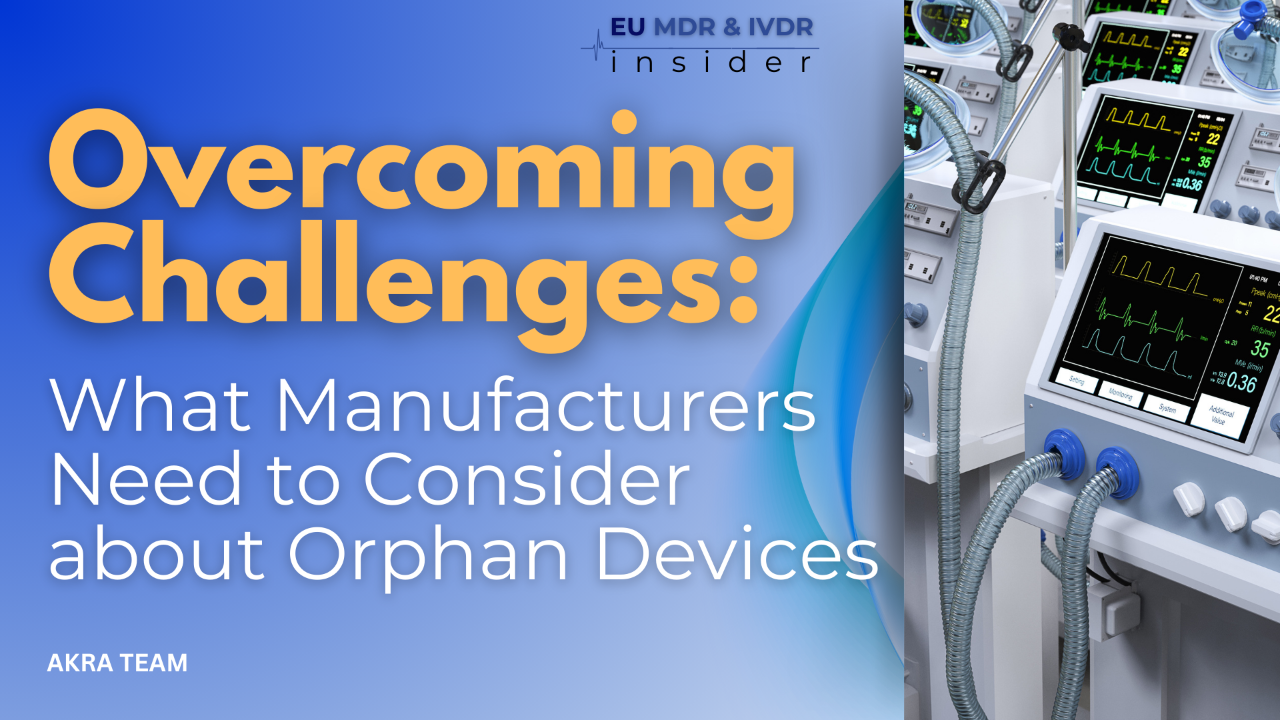Overcoming Challenges: What Manufacturers Need to Consider about Orphan Devices

Strategies for Clearing Regulatory, Data, and Cost Hurdles in the Approval Process
While the new MDCG guidance for orphan devices introduces regulatory flexibility, manufacturers must still navigate several significant challenges to successfully bring these devices to market.
[Download the EU Orphan Device Clinical and Regulatory Playbook]
From the complexity of regulatory interactions to the high costs of compliance, understanding and proactively addressing these obstacles is crucial for success.
Navigating Regulatory Complexity and Conflicting Stakeholder Interests
The orphan device approval process involves multiple regulatory entities, including notified bodies, expert panels, and competent authorities. Each plays a unique role, but their perspectives are not always aligned, which can create delays and confusion:
- Notified bodies prefer to control the conformity assessment process and may be skeptical about the expanded role of expert panels.
- Expert panels act as advisory groups that provide guidance on alternative data acceptance, often leading to conflicting opinions about evidence standards.
- Competent authorities act as regulators but may not always intervene early in the process.
Manufacturers can reduce these conflicts by engaging in early dialogue with both expert panels and notified bodies, ensuring that their applications address both perspectives. Transparency and structured communication are critical to overcoming these regulatory hurdles.
Addressing Clinical Data Limitations
One of the biggest challenges for orphan devices is the lack of sufficient clinical evidence, often due to the small patient population. The MDCG guidance allows for alternative evidence to be used, but this flexibility comes with caveats:
- Real-world data and off-label use – Legacy devices may have data from off-label applications, but this is only acceptable for previously CE-marked devices.
- In silico modeling and computational simulations – These methods can reduce the need for human clinical trials but must be validated and scientifically justified.
- Extrapolated data – Data from other patient populations (e.g., adult data used for pediatric applications) can be used but must be supported by a strong scientific rationale.
Manufacturers must still adhere to scientific and ethical standards, ensuring that evidence is credible and based on sound research principles. The less clinical data available at the time of submission, the more manufacturers must commit to collecting post-market clinical follow-up (PMCF) data to close evidence gaps.
Managing High Compliance Costs
Compliance with MDR is expensive, and orphan devices often have limited commercial potential, making cost management a significant concern:
- Class III Devices – Many orphan devices are high-risk (Class III), which requires more rigorous scrutiny and consultation.
- Notified body fees – Regulatory review fees are often fixed and non-negotiable, regardless of the market size for the device.
- Post-market commitments – Manufacturers must budget for ongoing PMCF studies, which can be costly over the lifetime of the device.
To mitigate these financial challenges, companies should:
- Explore government-backed initiatives and funding programs for orphan devices.
- Take advantage of free advisory services from expert panels through 2025.
- Collaborate with patient advocacy groups and professional societies, which may have access to funding or grant opportunities.
Ensuring a Clear Market Strategy
Given the niche nature of orphan devices, manufacturers need a focused market strategy to maximize profitability:
- Identify specialized treatment centers – Rare conditions are often treated in a limited number of hospitals with subspecialty expertise. Establishing relationships with these centers can create direct distribution channels.
- Target reimbursement opportunities – Work with healthcare authorities to secure reimbursement agreements, which can offset patient costs and create a sustainable revenue stream.
- Leverage first-mover advantage – Early adopters of the orphan device pathway can position themselves as industry leaders, particularly in fields where device shortages are a growing concern.
Balancing Commercial and Ethical Responsibilities
Orphan devices occupy a unique position in the medtech industry because they address unmet medical needs. While the market may be small, the human impact is significant, particularly in pediatric applications where treatment options are limited. Manufacturers must strike a balance between commercial viability and corporate social responsibility.
By demonstrating a commitment to patient well-being, companies can enhance their reputation and attract partners, investors, and healthcare providers who value ethical innovation.
Turning Challenges into Opportunities
While the path to orphan device approval presents several obstacles, these challenges are not insurmountable. The key is to engage early with regulators, strategically plan clinical evidence collection, and align business objectives with regulatory expectations.
Manufacturers who adopt a proactive and well-structured approach will be better positioned to succeed in this highly underserved market, gaining both regulatory trust and long-term competitive advantage. By recognizing the opportunities embedded in these challenges, companies can play a vital role in addressing rare diseases while creating a sustainable market presence in the European regulatory landscape.
Subscribe to EU MDR & IVDR Insider
